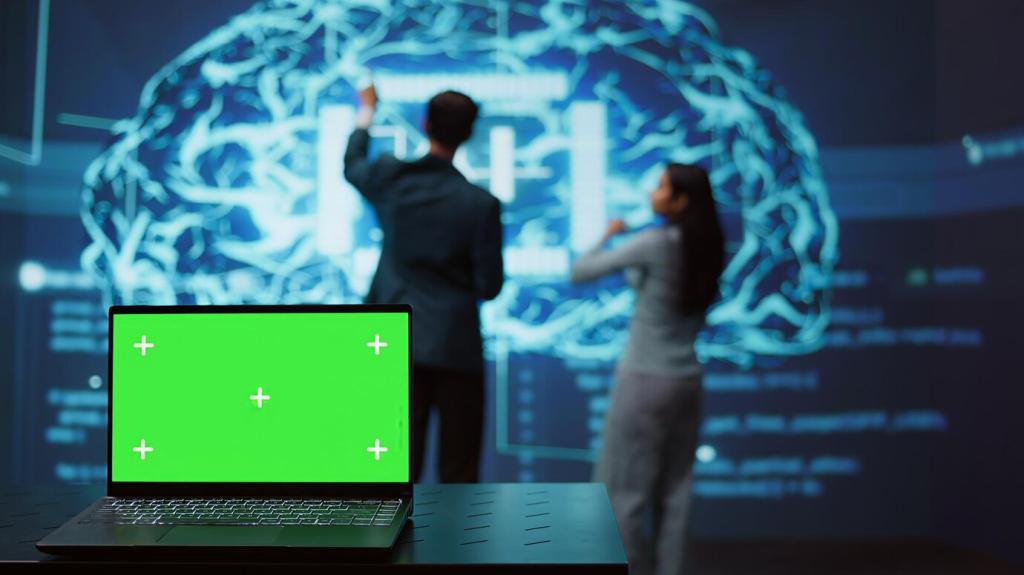Revolutionary Developments in Robotics
Intelligent Robotic Perception

Advanced Sensor Integration
The integration of cutting-edge sensors has dramatically improved the ability of robots to perceive and interpret their environment. High-resolution cameras, LIDAR, and ultrasonic range finders now empower robots with a sense of depth, texture, and spatial orientation akin to human perception. By merging data from multiple sensor types, robots achieve a comprehensive understanding of their context, which is particularly valuable in unpredictable or dynamic settings. These integrated systems underlie the reliability of autonomous vehicles, drone navigation, and service robots operating within complex human environments. The resulting improvements in accuracy and adaptability are propelling robotics toward safer and more versatile real-world applications.

Machine Vision and Deep Learning
Machine vision, powered by advances in deep learning, has become central to the latest wave of robotics innovation. By training neural networks on vast image datasets, robots can now recognize objects, interpret gestures, and even detect subtle patterns in their environment. This capability enables them to perform complicated tasks such as sorting materials in warehouses, identifying defects in manufacturing, or monitoring hospital patients. The synergy between machine vision and machine learning grants robots the flexibility to operate autonomously in previously inaccessible or poorly structured spaces, bridging the gap between human-level perception and automated decision-making.

Contextual Awareness and Mapping
Robots today are gaining contextual awareness that allows them to map, interpret, and respond to their surroundings with remarkable precision. Technologies like simultaneous localization and mapping (SLAM) enable robots to construct real-time maps while tracking their own movements within an environment. This spatial intelligence supports tasks from autonomous delivery to search-and-rescue missions in disaster-struck areas. Contextual awareness also aids in dynamic task allocation, resource management, and even interaction with unstructured or unpredictable spaces, facilitating a higher degree of autonomy and reducing the need for constant human oversight.
Human-Robot Collaboration
Safe Interaction Mechanisms
Recent breakthroughs in robotics have prioritized safe interaction between humans and machines. Cobots are now equipped with force-limited mechanisms and advanced motion planning algorithms that actively prevent accidental harm. Enhanced feedback systems alert robots to the presence and proximity of humans, allowing for seamless cooperation without physical barriers. These innovations not only protect user safety but also unlock new possibilities for robots to work directly on production lines, in warehouses, or even in operating rooms. As collaborative robots learn to anticipate and adapt to human movements, they are making shared work environments more productive and less hazardous.
Intuitive Human-Machine Interfaces
The development of intuitive interfaces is making it easier than ever for people to communicate and collaborate with robots. Voice commands, gesture recognition, and augmented reality overlays provide natural channels for humans to instruct and monitor robotic systems. These advances reduce the learning curve for users, diminishing reliance on specialized training or programming skills. As a result, a broader spectrum of workers can leverage robotic assistance in their daily work, from manufacturing technicians to healthcare providers. The expansion of accessible and user-friendly robotic controls is removing barriers to adoption and facilitating harmonious collaboration between people and machines.
Collaborative Learning and Adaptation
Collaborative robots are increasingly capable of learning in real-time from their human counterparts. Through techniques like imitation learning and reinforcement learning, robots observe human actions and attempt to replicate or augment them. This allows for a faster transfer of expertise and the continual improvement of robotic performance within dynamic work environments. As robots adapt to evolving tasks and work habits, they become more effective teammates, capable of handling variation and complexity without constant reprogramming. Collaborative learning closes the gap between rigid automation and flexible, human-centered workflows, making advanced robotics more accessible to industries of all kinds.
Autonomous Mobility and Navigation
Self-driving technologies are at the forefront of autonomous mobile robotics. Drawing from an array of sensors and deep learning algorithms, robots and vehicles can now interpret traffic conditions, detect obstacles, and plot safe, efficient routes in real-time. The improvements in sensor fusion and predictive analytics allow for immediate adaptation to unforeseen events, greatly enhancing machine reliability and safety. Whether operating delivery vehicles in bustling city centers or facilitating long-haul trucking, self-driving systems are reducing the need for human operators while promising gains in efficiency, cost-savings, and accident prevention. These advancements are also informing the broader field of robotic mobility, paving the way for further innovation in urban planning and infrastructure.
